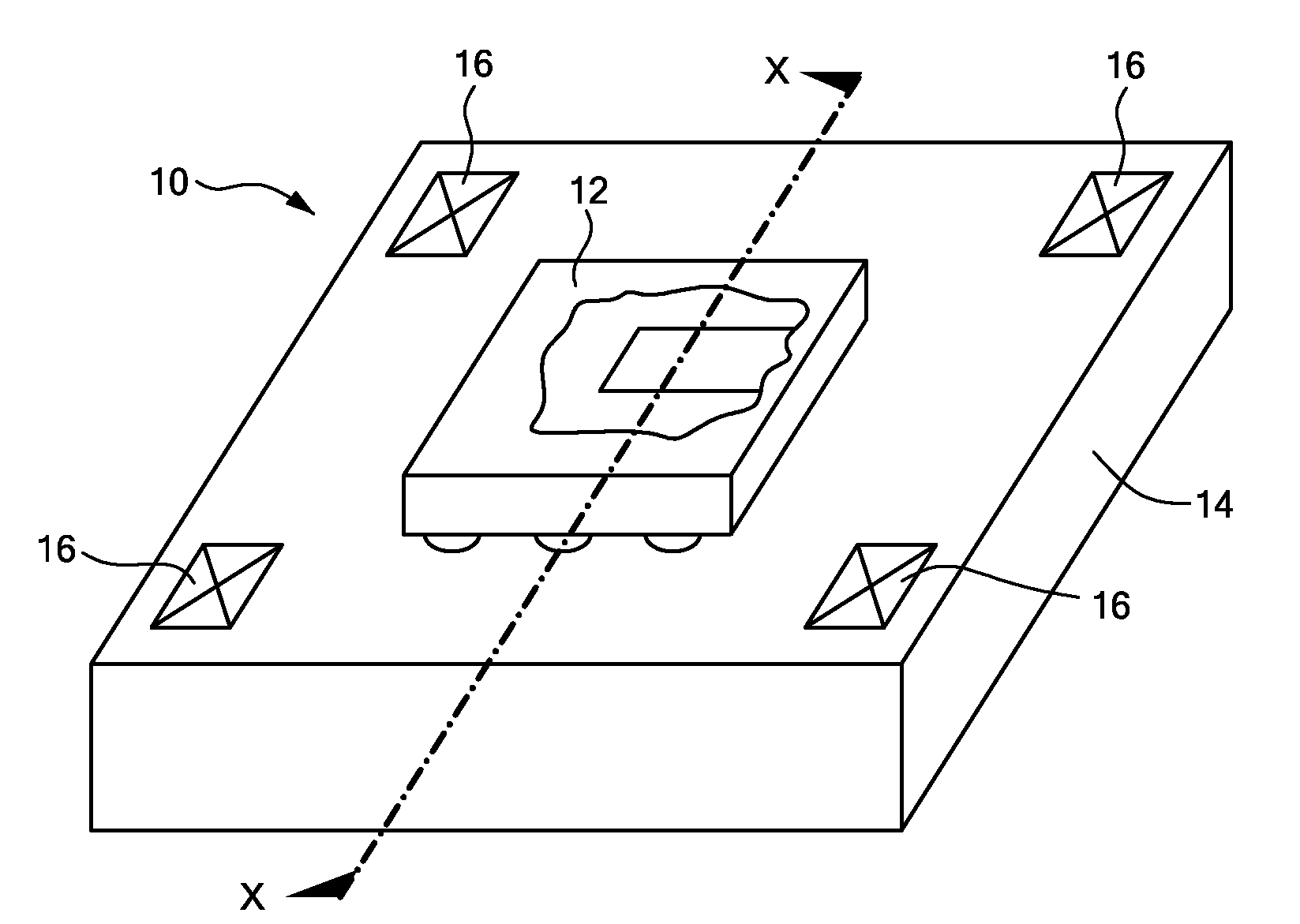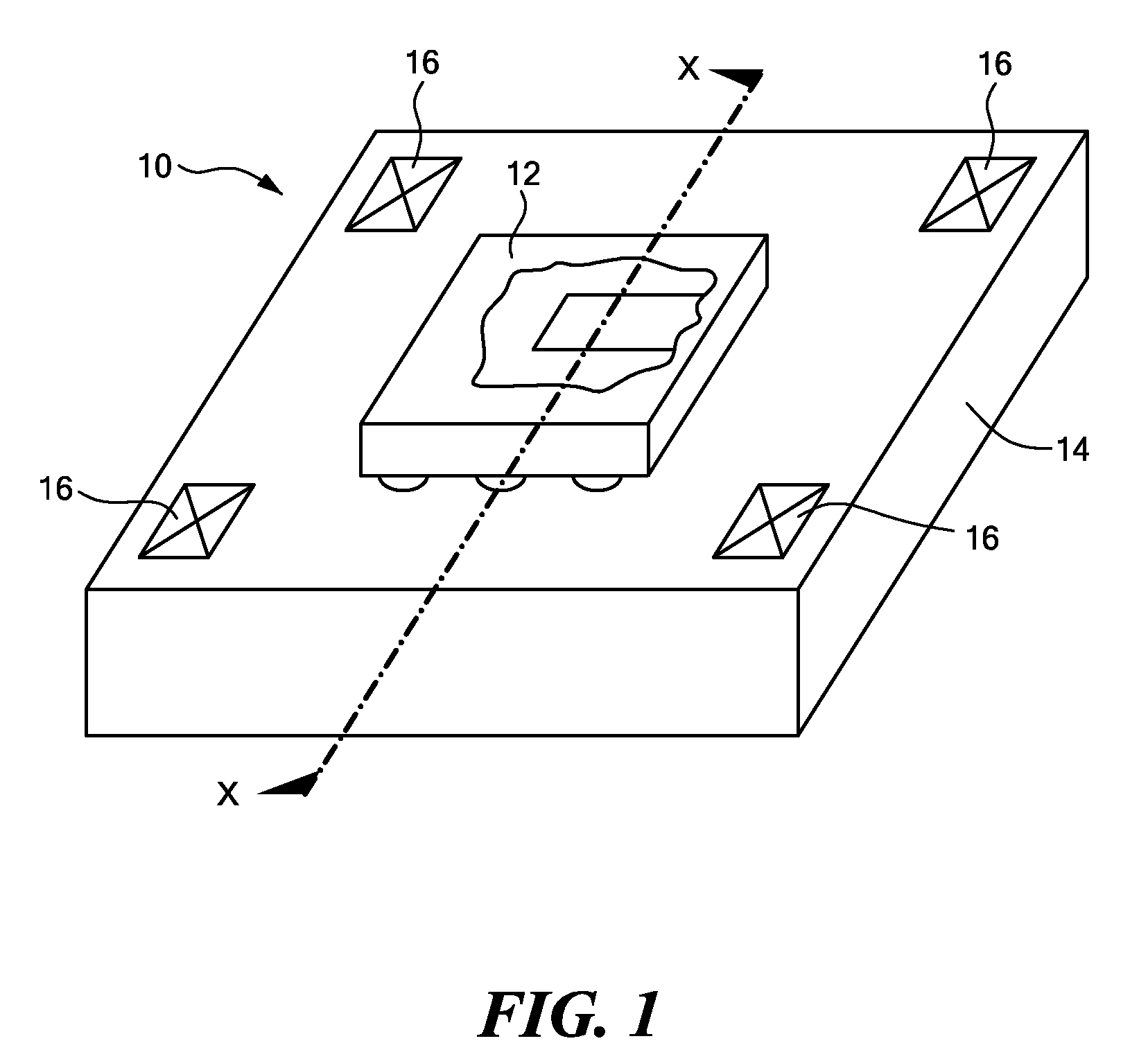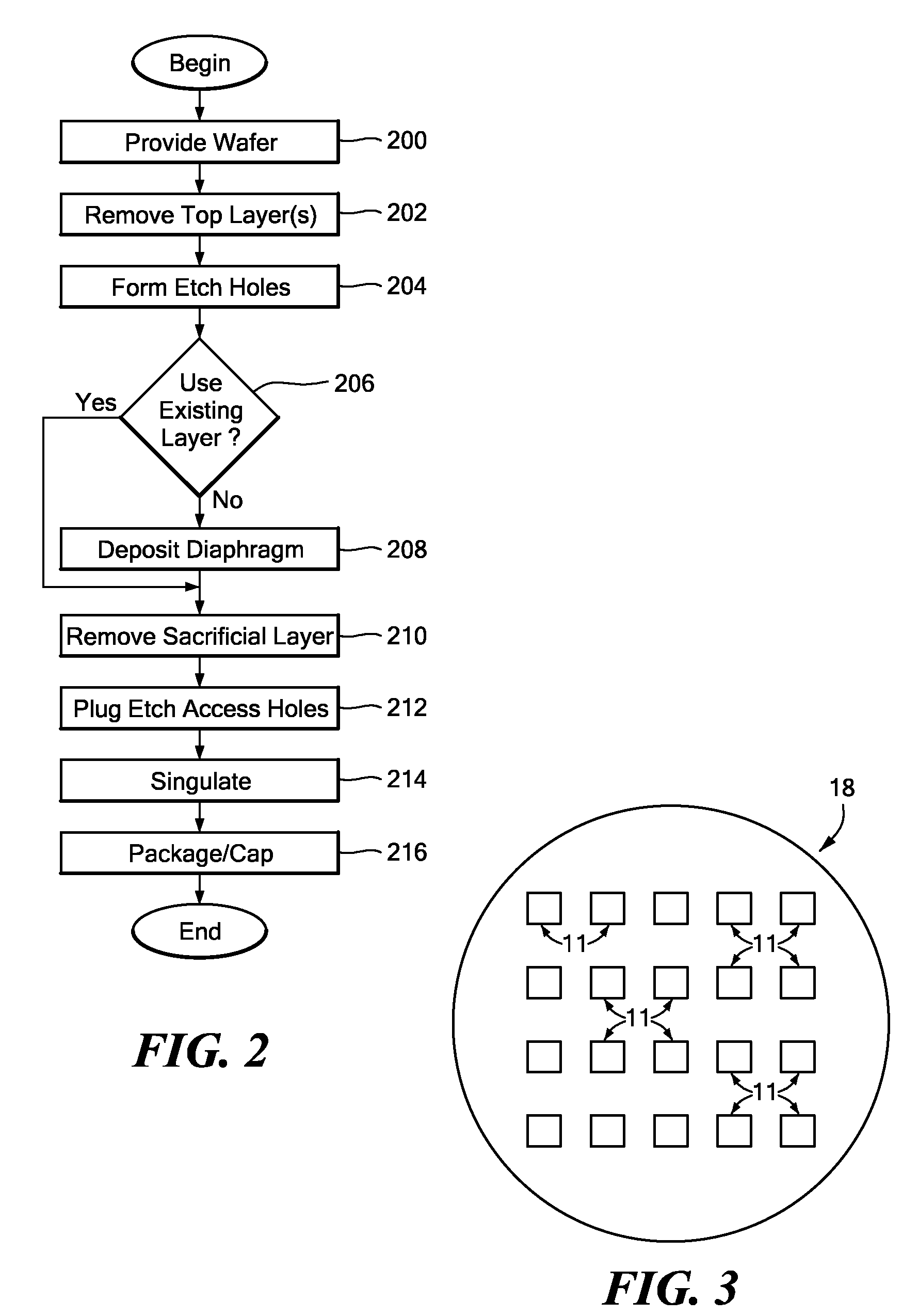Method of Forming a Device by Removing a Conductive Layer of a Wafer
a technology of conductive layer and wafer, which is applied in the direction of microstructural device, printing, electrical apparatus construction details, etc., can solve the problems of stiction in compliant structures, create fabrication inefficiencies, harm metallization and pre-formed circuits, etc., and achieve the effect of facilitating the removal of the intermediate layer
- Summary
- Abstract
- Description
- Claims
- Application Information
AI Technical Summary
Benefits of technology
Problems solved by technology
Method used
Image
Examples
Embodiment Construction
[0019]Illustrative embodiments of the invention fabricate a MEMS device (e.g., a pressure sensor) from existing layers of a multilayered wafer. Such embodiments typically use one or more conductive layers as a sacrificial layer. Details of illustrative embodiments are discussed below.
[0020]FIG. 1 schematically shows an exemplary use of a chip 10 produced in accordance with illustrative embodiments of the invention. Specifically, the chip 10 in this embodiment is a MEMS device having both circuitry 11 and movable structure 13 (see FIGS. 3, 4A-4C, and 5A-5D). The MEMS device 10 illustratively is formed on a silicon wafer and packaged within a conventional package 12. The package 12 is coupled with a circuit board 14 having interconnects 16 to electrically communicate with an external device, such as a computer.
[0021]Since it is implemented as a MEMS device, the chip 10 may execute any conventionally known functionality commonly implemented by a MEMS device, such as a pressure sensor. ...
PUM
 Login to View More
Login to View More Abstract
Description
Claims
Application Information
 Login to View More
Login to View More - R&D
- Intellectual Property
- Life Sciences
- Materials
- Tech Scout
- Unparalleled Data Quality
- Higher Quality Content
- 60% Fewer Hallucinations
Browse by: Latest US Patents, China's latest patents, Technical Efficacy Thesaurus, Application Domain, Technology Topic, Popular Technical Reports.
© 2025 PatSnap. All rights reserved.Legal|Privacy policy|Modern Slavery Act Transparency Statement|Sitemap|About US| Contact US: help@patsnap.com



